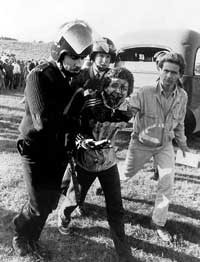 Britain, during the mid '80s, was not a particularly nice place to be, especially if your way of life ran contrary to the will of the government.
Britain, during the mid '80s, was not a particularly nice place to be, especially if your way of life ran contrary to the will of the government.
Heavy industry was the first to take the brunt. For generations, Britain had supplied the world with coal, steel and other material exports. It was all to end now with factories, foundries and pits being closed down.
Margaret Thatcher's Conservative government, gorged on the Capitalist principles of the Milton Friedman school of economics, saw mass unemployment as a reasonable price to pay for realigning Britain within the world market.
Those who disagreed were met with an increasingly militarized police authority, which was given practically carte blanche to do as it would. In the inner cities and amongst the striking miners, charges of police brutality become more frequent and ever more shrill. Between 1984-1985, police forces honed their strategies and skill in violently smashing picket lines and protestors.
By the end of 1984, Wiltshire Police were also planning their tactics, which would be deployed against the Peace Convoy in June 1985. They borrowed heavily from approaches taken against the miners on the picket lines.
The Peace Convoy was largely made up of New Age Travellers - the spiritual (and occasionally actual) heirs of the 1960s Hippy Movement. They wanted no part of Thatcher's Capitalist society.
They converted vehicles into homes, made out of old coaches, ambulances, trucks and vans. They moved around the country, often following the free festival circuit, home-schooling their children and financing their lives with hand-crafted goods or seasonal farm work.
Held at Summer Solstice, the Stonehenge Free Festival was the apex of this nomadic life-style. 30,000 people had turned up for the annual event, for the previous ten years, celebrating with free abandon. They were continuing a centuries long tradition of public gatherings there.
But in 1984, English Heritage had taken possession of the ancient monument. It wanted the landmark monetized with a high entrance fee, and tall fences to keep the public out. Naturally this included a sudden end to the Stonehenge Free Festival.
English Heritage was awarded a four mile exclusion zone around Stonehenge. Any festival goer entering it was immediately deemed a criminal and arrested. The Peace Convoy came early, fore-runners of the thousands more who would certainly follow. They were to test the waters and see how strongly this exclusion zone would be enforced.
What they encountered was utter brutality, which shocked and sickened even those ideologically on the side of the police.



 Britain, during the mid '80s, was not a particularly nice place to be, especially if your way of life ran contrary to the will of the government.
Britain, during the mid '80s, was not a particularly nice place to be, especially if your way of life ran contrary to the will of the government.
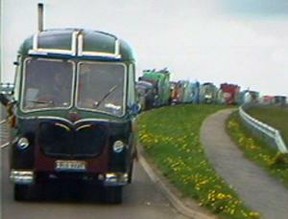 The Peace Convoy had gathered in Savernake Forest, on land belonging to the Earl of Cardigan. On the morning of June 1st 1985, the majority of them left together in a line of around 120-150 vehicles.
The Peace Convoy had gathered in Savernake Forest, on land belonging to the Earl of Cardigan. On the morning of June 1st 1985, the majority of them left together in a line of around 120-150 vehicles. 


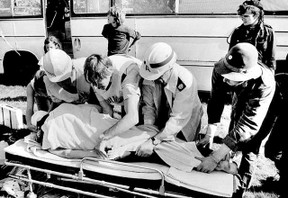 There were actually two fields. The first, in which the Peace Convoy parked for much of the afternoon, was fallow grassland.
There were actually two fields. The first, in which the Peace Convoy parked for much of the afternoon, was fallow grassland. 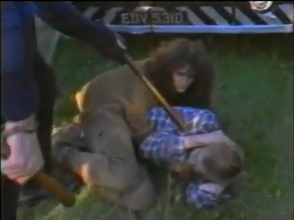
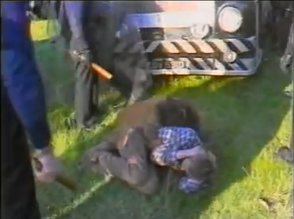
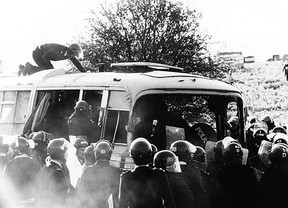 By evening, all that the entrapped travelers wanted to do was return to Savernake Forest. If lone voices still pushed for pressing on to Stonehenge, they were quickly shouted down.
By evening, all that the entrapped travelers wanted to do was return to Savernake Forest. If lone voices still pushed for pressing on to Stonehenge, they were quickly shouted down. 




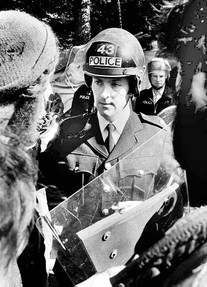 The rest of Britain saw only through the lens of a television camera or read about it next day in the press. Unfortunately the media blindly reported all that a police spokesperson told them. There were no women and children. Officers were arresting armed, male insurgents intent upon destroying the very fabric of Stonehenge.
The rest of Britain saw only through the lens of a television camera or read about it next day in the press. Unfortunately the media blindly reported all that a police spokesperson told them. There were no women and children. Officers were arresting armed, male insurgents intent upon destroying the very fabric of Stonehenge.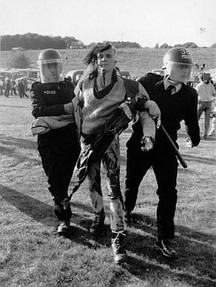 Nearly 500 people were arrested from the Peace Convoy on June 1st 1985. They were initially all taken to a large garage, where they were strip-searched, then taken one by one for questioning.
Nearly 500 people were arrested from the Peace Convoy on June 1st 1985. They were initially all taken to a large garage, where they were strip-searched, then taken one by one for questioning.





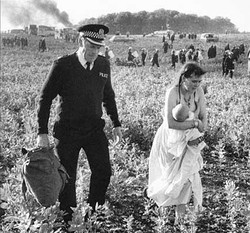

 St Tydecho's Churches in West Waleson 09/03/2014
St Tydecho's Churches in West Waleson 09/03/2014
 Goodies for an Outlander Premiere Partyon 03/06/2015
Goodies for an Outlander Premiere Partyon 03/06/2015
 Holocaust Memorial Day Interview with Rainer Höss, Grandson of Rudolf Architect of Auschwitzon 01/24/2015
Holocaust Memorial Day Interview with Rainer Höss, Grandson of Rudolf Architect of Auschwitzon 01/24/2015
 Romantic Valentine Gifts for an Outlander Fanon 01/16/2015
Romantic Valentine Gifts for an Outlander Fanon 01/16/2015


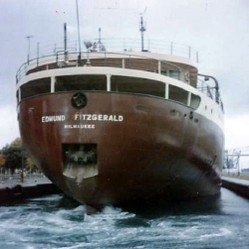
Comments
In my humble, but most cynical, view, governments get away with just about as much as the populace is prepared to let them. Unfortunately, that tends to be quite a lot..
I applaud everyone who kept this story from being buried. Our governments (no matter what country) do many unlawful things to its own people.
I'll pass on your regards to my friend. :)
That's good to hear, Jo. :)
Scary to say, but that baby would be 28 years old now! I also wonder where they are. It would be interesting to have a follow up now from those who were at the Beanfield. I can tell you about one lady. She's now living in a house in the Midlands, married with one daughter just accepted to enter University. She still fights the good fight, just no longer on the road.
That picture of the young girl holding her baby at the top of the article is so upsetting isn't it... I wonder where they all are now. I remember that. Horrible.
This was the great age of Rupert Murdoch coming into power, hand in hand with Mrs Thatcher herself. I get your point.
Besides the deficiencies cited here, I suspect that in Thatcher's era some journalists may have been intimidated. Remember, journalists in national press have to write what the employers tell them to. If the employers, who may have been in contact with government, wanted the story suppressed, then it would have been.
Hear, hear! Re the way the media can misinform or downright mislead. It's quite enlightening to explore how 'tame' our reporters were, when it came to the Beanfield. The Observer reporter later said that there were two factors at play here. The media people had arrived with a notion of 'crazy hippies' along the Charlie Manson model. Then they were kept out of sight of proceedings, being told lots of things which played into their pre-conceived ideas. They really didn't do their jobs.
I'm glad that I wrote it too, and pleased that you found it informative. Thanks for commenting.
Very enlightening article Jo. I am glad you wrote it. The world needs to know the truth about things like this. People are often too quick to believe the "censored" media, not realizing how easily the truth can be camouflaged.